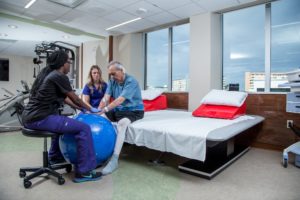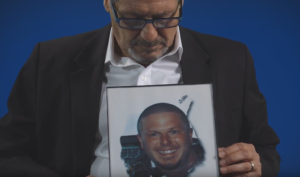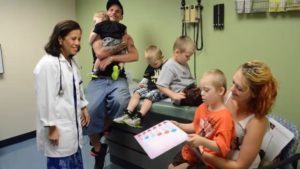Recognizing Best Practices in Patient and Family Engagement
Meet the 2018 Winners:
Innovative. Patient and Family- Driven. Inspiring. Transformative. EngagingPatients.org is proud to announce the 2018 winners of the fifth annual Sherman Award for Excellence in Patient Engagement:
Memorial Rehabilitation Institute’s Family in Training Program and the MedStar Health Sepsis Collaborative
Drawn from a highly competitive field of participants, the winners were announced during the IHI/National Patient Safety Foundation’s Annual Patient Safety Congress.
The honor is conferred by Taylor Healthcare and the IHI/NPSF Lucian Leape Institute on behalf of EngagingPatients.org. The Sherman Award recognizes innovative programs that are improving care and outcomes through patient and family engagement.
Additionally, Dayton Children’s Hospital Family Resource Connection was named the recipient of the Sherman Citation for Excellence in Pediatric Patient Engagement, a new honor focused on pediatric facilities.
Judges cited the programs’ approach to addressing critical issues, incorporating and engaging patients and families through the process and demonstrating results.
Memorial Rehabilitation Institute
Family in Training program

Memorial Rehabilitation Institute’s Family in Training program was created to address an increased number of family-related falls on Memorial’s 89-bed adult inpatient rehab unit. As families “roomed-in” and became more comfortable staying on the unit, they started helping their loved ones move from the bed to a wheelchair or to the toilet in part because they didn’t want to “bother” the staff. Families weren’t always prepared for the difficulty of the transfers and patients fell.
A proactive caregiver training program is now initiated early in the patient stay. Willing family members partner with a physical therapist, occupational therapist and nurse to receive hands-on training on five essential elements of care.
After achieving competence, the family member receives a bright orange band labeled “Family in Training,” which communicates to all staff that this family member is willing and able to independently assist their loved one. The program has decreased patient falls and families say they feel engaged, confident and proud in being able to help loved ones. And, fewer families have sent their loved ones to skilled nursing facilities after creation of the program.
MedStar Health
Sepsis Collaborative
More than 1.5 million Americans get sepsis each year and about 250,000 die—more than breast cancer, prostate cancer and AIDS combined, the CDC says. Being able to identify sepsis signs and symptoms is critical to getting patients the care they need to survive.
The MedStar Health Sepsis Collaborative is a comprehensive quality improvement initiative that partnered with sepsis survivors and family members of patients lost to sepsis. MedStar’s Patient and Family Advisory Councils for Quality and Safety are key partners and are executing regional sepsis public awareness campaigns including stories shared through video.
In addition to practice change and improved resident orientation, the program now is focused on improving emergency department processes related to identifying and treating sepsis. There is now standardized education for care providers, support staff and PFACQS members, a sepsis bundle compliance dashboard, automated orders and alerts and real-time surveillance tools. Public awareness efforts are being tracked and there is now Maryland legislation to develop a state-wide sepsis awareness campaign.
Special Recognition: Sherman Citation for Excellence in Pediatric Patient Engagement
Dayton Children’s Hospital
Family Resource Connection
The Dayton Children’s Family Resource Connection uses a patient’s visit as an opportunity to evaluate and address non-medical issues that may impact health. The hospital trains student advocates from local universities in communication, engagement, respect and self-awareness. These advocates use a screening tool developed by the hospital to evaluate a family’s needs in a primary care clinic setting and then match them with available resources. Information gathered is entered in the patient’s electronic medical record so clinicians are aware of challenges and advocates follow up with families enrolled in the program every seven to 10 days. The program already has screened 3,000 families for social needs and engaged more than 1,800 patient families resulting in nearly 4,000 referrals and almost 700 documented resource connections.


